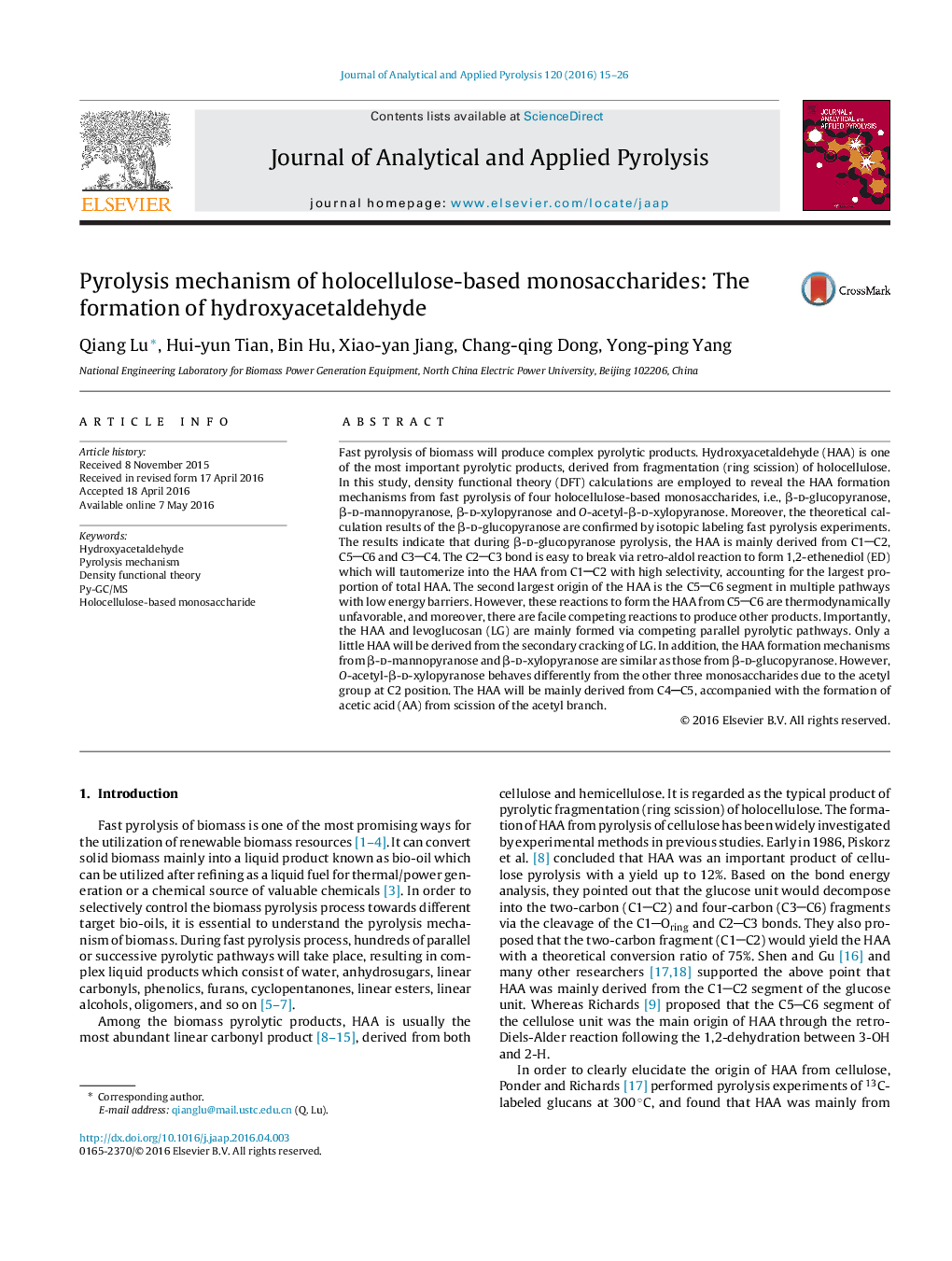| کد مقاله | کد نشریه | سال انتشار | مقاله انگلیسی | نسخه تمام متن |
|---|---|---|---|---|
| 1196524 | 1492957 | 2016 | 12 صفحه PDF | دانلود رایگان |
• DFT method is used to reveal hydroxyacetaldeyde (HAA) formation mechanism.
• β-d-glucopyranose, β-d-mannopyranose and β-d-xylopyranose share similar pathways to form HAA.
• HAA is mainly derived from the C1C2 and C5C6 (or C4C5) of the three monosaccharides.
• O-Acetyl-β-d-xylopyranose will only mainly produce the HAA from C4C5.
• Isotopic labeling experiments are performed to confirm the theoretical results.
Fast pyrolysis of biomass will produce complex pyrolytic products. Hydroxyacetaldehyde (HAA) is one of the most important pyrolytic products, derived from fragmentation (ring scission) of holocellulose. In this study, density functional theory (DFT) calculations are employed to reveal the HAA formation mechanisms from fast pyrolysis of four holocellulose-based monosaccharides, i.e., β-d-glucopyranose, β-d-mannopyranose, β-d-xylopyranose and O-acetyl-β-d-xylopyranose. Moreover, the theoretical calculation results of the β-d-glucopyranose are confirmed by isotopic labeling fast pyrolysis experiments. The results indicate that during β-d-glucopyranose pyrolysis, the HAA is mainly derived from C1C2, C5C6 and C3C4. The C2C3 bond is easy to break via retro-aldol reaction to form 1,2-ethenediol (ED) which will tautomerize into the HAA from C1C2 with high selectivity, accounting for the largest proportion of total HAA. The second largest origin of the HAA is the C5C6 segment in multiple pathways with low energy barriers. However, these reactions to form the HAA from C5C6 are thermodynamically unfavorable, and moreover, there are facile competing reactions to produce other products. Importantly, the HAA and levoglucosan (LG) are mainly formed via competing parallel pyrolytic pathways. Only a little HAA will be derived from the secondary cracking of LG. In addition, the HAA formation mechanisms from β-d-mannopyranose and β-d-xylopyranose are similar as those from β-d-glucopyranose. However, O-acetyl-β-d-xylopyranose behaves differently from the other three monosaccharides due to the acetyl group at C2 position. The HAA will be mainly derived from C4C5, accompanied with the formation of acetic acid (AA) from scission of the acetyl branch.
Journal: Journal of Analytical and Applied Pyrolysis - Volume 120, July 2016, Pages 15–26
